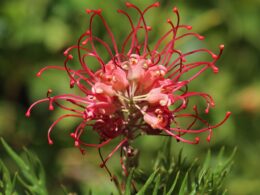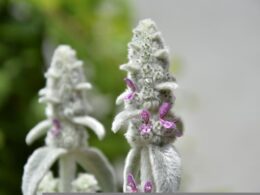Black Lily Flowers – Lilium Asiatic Cultivars
When you ask about a black lily flower, most people will think of Asiatic lily hybrids. They’re results of crossing different species of lilies, including the popular Lilium auratum. How much black is in these hybrids? It depends on the parentage. A true black lily would have 100% black pigmentation, but such flowers don’t exist. Here are some close-to-black Lilium cultivars!
- ‘Black Jewel’ – this is an almost-black lily hybrid with tints of deep purple. The petals have black streaks that make it look even more interesting.
- ‘Black Pearl’ – an Asiatic lily with black petals and yellow stamens, one of the darkest lilies in the world. The petals have a deep red sheen to them.
- ‘Black Out’ – a red lily with black spots and streaks near the base of the petals.
- ‘Black Charm’ – an Oriental lily hybrid with deep burgundy to black petals and deep red stamens.
- Black Wizard™ – a black Asiatic lily with crimson stamens. It’s one of the darkest lilies you can find, and the plant is also impressively tall.
Are they black enough for you? Regardless of the darkness of the petals, black lily flowers are sure to make a statement in any garden! The contrast of the black petals with other brightly-colored flowers is simply stunning.
Black Calla Lilies and Other Black Flowers – Not (True) Lilies!
Next, we have black calla lilies. These are not, however, true lilies. They’re actually members of the Arum family, and their scientific name is Zantedeschia. The black calla lily comes in several varieties, including:
- ‘Black Star’ – dark burgundy to black-colored flowers;
- Z. rehmannii ‘Odessa’ – blooms in a dark shade of purple that’s almost black;
- ‘Cantor Black’ – large, almost black flowers with a deep purple center.
- Other black flowers that are sometimes mistaken for lilies include the black dahlia and black pet
These flowers make excellent cut flowers, as they can last for up to two weeks in a vase. Remember to cut the stems at a slight angle, so that they last longer. The black calla lily is also a popular choice for bouquets and corsages.
Other black flowers (or at least very close to black) are: Petunia ‘Black Velvet,’ Dahlia ‘Fidalgo Blacky,’ Viola x wittrockiana ‘Clear Crystals Black,’ and the bat orchid. They may be different from lilies, but if you’re looking to add a touch of black to your garden, they’ll do the job just fine!
Using Black Lilies in the Garden (and Beyond)
Now that you know all about black lily flowers, it’s time to learn how to use them in the garden and beyond. Here are some tips:
- Plant black lily bulbs near other brightly-colored flowers to create a stunning contrast. They pair especially well with white and red lilies – just make sure the bloom times are the same.
- Make a border of black lilies around your garden to create a dramatic effect. Containers full of these flowers also make excellent porch or patio decorations.
- Add black lily flowers to bouquets and arrangements for a touch of mystery.
- Use black calla lilies as centerpieces or corsages for special occasions.
If you’re growing Lilium hybrids in your garden, remember that they need full sun or light shade to thrive. Asiatic lilies also prefer well-drained, neutral to slightly alkaline soil with plenty of organic matter. Most varieties are quite hardy and can even withstand light frost – they grow well in zones 4-9.
Keep the soil consistently moist. Asiatic lilies need 1-2 inches of water per week to stay healthy. Every spring, fertilize your black lilies with a slow-release fertilizer or a dose of fish emulsion or compost tea to promote growth and flowering.
Now you know everything there is to know about black lily flowers! Will you be adding any of these beautiful blooms to your garden this year? Let us know in the comments below.



















